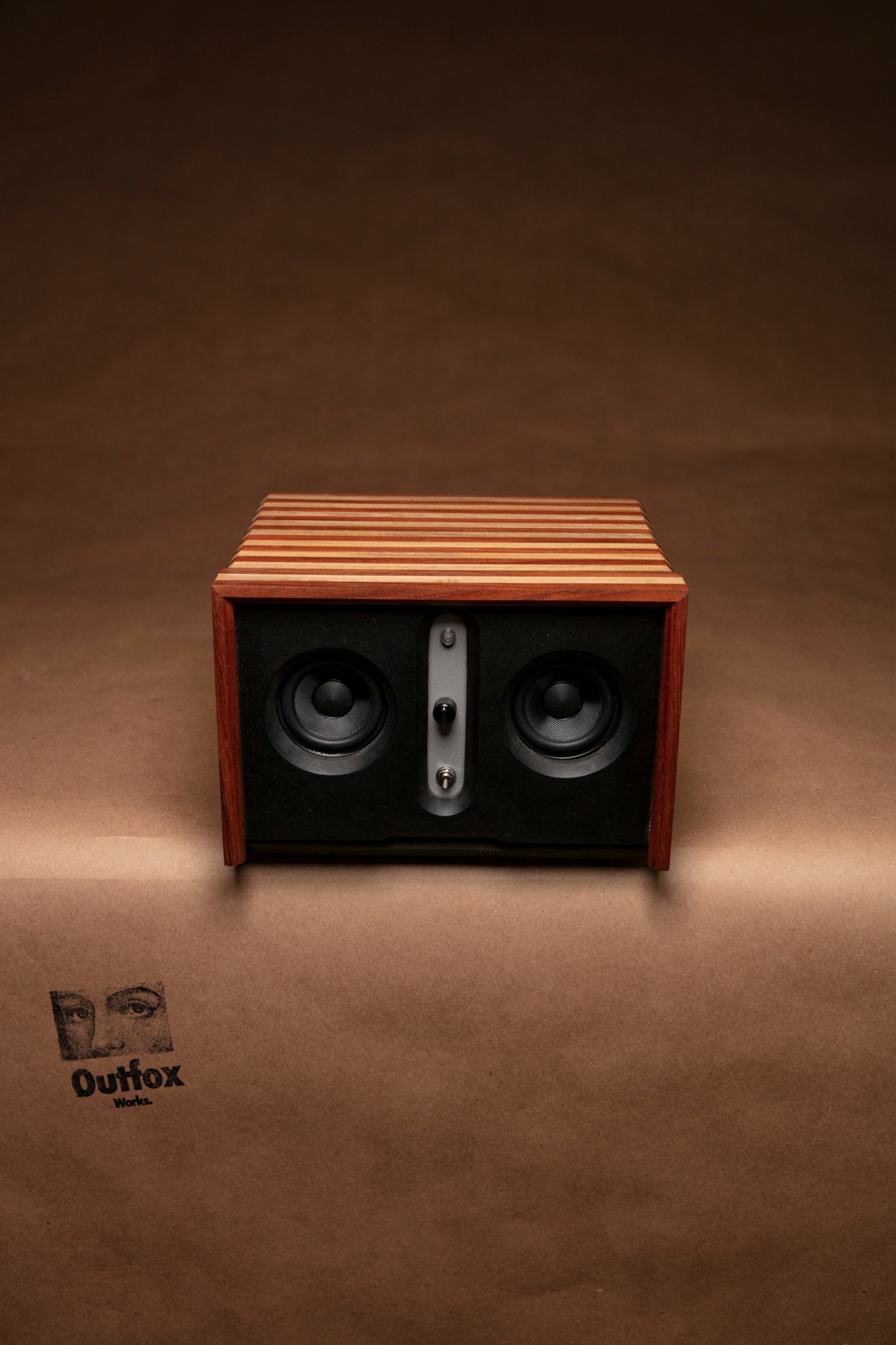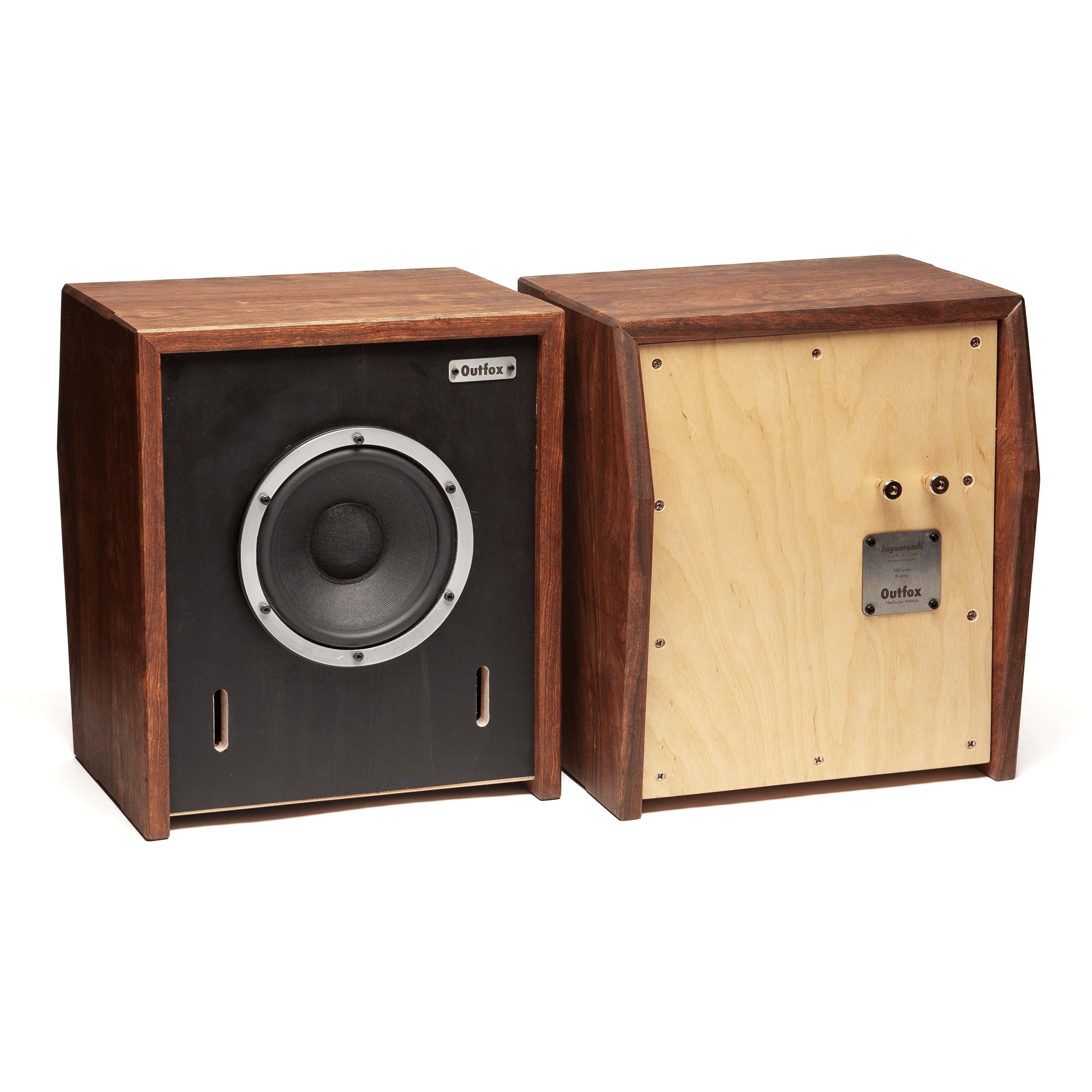We caught up with the brilliant and insightful Bernardo Figueroa a few weeks ago and have shared our conversation below.
Bernardo, thanks for taking the time to share your stories with us today How did you learn to do what you do? Knowing what you know now, what could you have done to speed up your learning process? What skills do you think were most essential? What obstacles stood in the way of learning more?
I didn’t learn what I do in a straight line. I didn’t go to school to become a woodworker, or a designer, or someone who makes sound systems by hand. It happened slowly, almost sideways—through curiosity, through building things I wanted to exist, and through needing to figure things out as I went.
I learned by watching, reading, trying, and messing up. YouTube was a big teacher early on. So were forums, books, blogs, and just staring at objects for a long time to understand how they were made. I’d look up a Japanese joinery technique, try it, fail, try again. I’d build a speaker box and then take it apart a week later because something didn’t feel right. I’m self-taught, but not because I wanted to be—it was just the only way forward at the time.
Looking back, I could’ve sped things up by finding people to learn from in person. It’s not that I didn’t want to—there just weren’t many around me doing what I was interested in. Having a mentor or even someone to bounce ideas off could’ve saved me years of second-guessing. Also, I think I underestimated how valuable real-time feedback is. You can read all the theory you want, but there are moments in craft where a small comment from someone experienced can change everything.
One thing I did do right was document almost everything. I have photos of most of my projects—materials, process, results, failures. Photography became part of how I think. It helped me pause, reflect, and see my work from a distance. Looking back through those images, I can trace how much I’ve grown. Even the mistakes have become part of the archive.
The most essential skills? I’d say observation, patience, and critical thinking. Being able to really look—at materials, tools, proportions, textures—and notice what’s going on. Patience because things rarely work the first time. And critical thinking because I’ve always needed to ask, why does this work? why doesn’t it?—and not stop until I find out.
As for obstacles, isolation was a big one. Working alone is great in some ways, but it also means no feedback loop, no one to catch your blind spots. Also, time and money—when you’re building things from scratch with limited resources, you learn to be creative, but it also slows you down.
There were mental blocks, too. Fear of not knowing enough. Wanting things to be perfect. Getting stuck between doing and doubting. Over time, I’ve learned to trust the process more. To just keep going. The work teaches you, if you let it.
In the end, everything I’ve learned has come from paying attention and staying in it. The more I do, the more I realize how much there is left to learn. But I’m okay with that. I like being in the middle of the process.


Bernardo, love having you share your insights with us. Before we ask you more questions, maybe you can take a moment to introduce yourself to our readers who might have missed our earlier conversations?
My name is Bernardo Figueroa. I’m a designer, craftsman, and photographer based in Guadalajara, Mexico. I founded Outfox, a design studio that builds custom platforms for enjoying music—primarily handcrafted hi-fi speakers, furniture, and audio systems for restaurants, bars, and collectors who care deeply about sound and aesthetics.
I got into this world through a mix of obsession and necessity. I’ve always loved music—not just listening to it, but thinking about how it fills space, how it changes mood, how it connects people. That led me to start building the objects around music: first small pieces of furniture, then speaker boxes, then full systems. I never planned to start a business—it just grew out of solving problems with my hands, learning one thing after another, and finding people who connected with the results.
Outfox started as a personal exploration and has grown into a studio that offers custom audio solutions with soul. We build everything by hand, often from solid wood, with a focus on timeless design and acoustic quality. We also provide installation, acoustic planning, and post-sale service—because I believe the relationship doesn’t end when the product is delivered. We work mostly with restaurants, bars, and cultural spaces, but I’ve also built pieces for home collectors and art exhibitions.
Our main goal is to elevate how people experience sound—not just through better equipment, but through meaningful objects that carry a story. A big part of what sets us apart is that we’re not just selling audio gear; we’re crafting pieces that feel alive. Each speaker, each cabinet, is a functional sculpture. We don’t follow trends. We build slowly, carefully, for people who value things made with intention.
What I’m most proud of is that every project we’ve done has come from real connections—word of mouth, shared values, mutual respect. I’ve worked with amazing people, from small cafés just getting started to big restaurants launching new concepts, and the common thread is always the same: they care about the vibe, about sound, about the details.
If you’re someone who sees music as something more than background noise—if you believe the objects in your space should have meaning and presence—then we’re probably on the same page. Whether you’re opening a new venue, upgrading your sound, or just want to live with better design, Outfox is here to make something that lasts.


Looking back, are there any resources you wish you knew about earlier in your creative journey?
Definitely. When I was starting out, I spent a lot of time figuring things out the hard way—not because I wanted to, but because I didn’t know where to look or who to ask.
One resource I wish I’d known about earlier is the value of in-person mentorship or apprenticeship—actually being in a workshop, watching someone skilled make decisions in real time. I thought I could piece it all together from YouTube, books, and forums—and to be fair, those were incredibly helpful—but nothing compares to standing next to someone and seeing how they move, how they solve problems, how they handle materials.
Also, I wish I’d gotten into community sooner. Whether that’s local meetups, maker spaces, or even just messaging people I admire, being around others who are building and experimenting creates a different kind of learning. When you work alone, it’s easy to overthink or get stuck. Having conversations, asking questions, sharing progress—it all helps you grow faster and see things from new angles.
On the technical side, I wish I’d learned about room acoustics and signal flow much earlier. I used to think great sound was all about the gear, but a lot of it is about the space. Once I understood that, it changed how I designed everything—from speaker cabinets to the layout of a restaurant.
Lastly, I wish someone had told me how important it is to take care of your body when doing craft. Ergonomics, proper posture, good tools—they matter more than you think. Pain slows you down, both physically and creatively.
Now, when I meet people starting out, I always try to share whatever I’ve picked up. Because at the end of the day, we all build on each other’s experience.


What do you think is the goal or mission that drives your creative journey?
Yes—and it’s evolved over time. At first, the goal was simple: to make things that felt right to me. Objects that were functional, beautiful, and meaningful. But over time, I realized what I was really chasing wasn’t just design—it was connection. Between people, sound, space, and emotion.
My mission now is to create platforms that let people experience music in a deeper, more intentional way. Whether it’s a handcrafted speaker, a piece of furniture, or an entire sound system in a restaurant, I want my work to support and elevate the act of listening. Not just to music—but to each other, to the room, to the moment.
I’m also driven by a need to make things that last. Not just physically, but emotionally. I want to create objects that people grow attached to—things that hold memory and presence. That’s why I work with wood, and why I take my time. It’s not about speed or scale. It’s about care.
At the core, I think my journey is about building bridges. Between craft and technology, tradition and modern life, utility and art. Between the things we make and the way we live with them.
I’m not trying to be the biggest or the fastest. I just want the work to be honest, and to resonate with the right people.
Contact Info:
- Website: https://www.outfoxworks.com
- Instagram: @outfoxworks
- Youtube: https://ww.youtube.com/@outfoxworks




